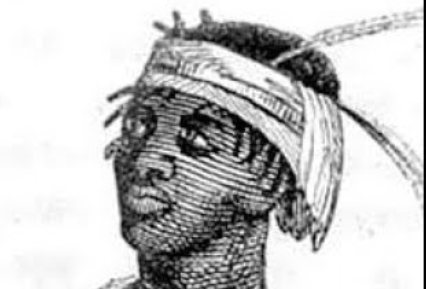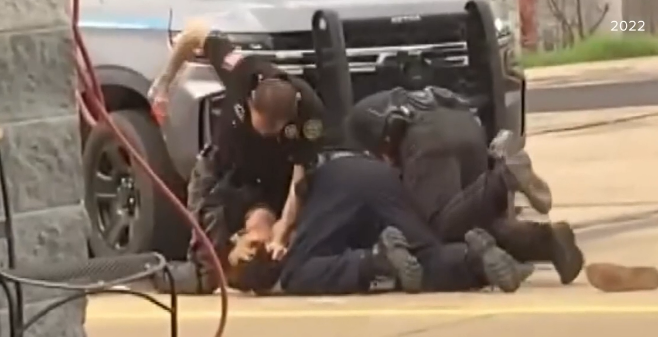Photo: YouTube
John Horse (c. 1812–1882) also known as Juan Caballo, Juan Cavallo, John Cowaya (with spelling variations) and Gopher John, was of mixed ancestry (African and Seminole Indian) who fought alongside the Seminoles in the Second Seminole War in Florida.
He rose to prominence in the third year of what was to become a seven-year war when the first generation of Black Seminole leaders was largely decimated and the primary Seminole war chief, Osceola (Asi Yahola), fell into the hands of the American military commander, General Thomas Sydney Jesup. John Horse had been fighting alongside Osceola and acting as his interpreter by this time. When they were seized while under a flag of truce during negotiations with Jesup’s emissary, Florida militia general Joseph Hernandez, John Horse found himself imprisoned along with Osceola and other members of his band at Fort Marion (Castillo de San Marcos), the old Spanish fort that formerly defended St. Augustine, the colonial capital of Spanish Florida.
John Horse gained his initial fame for joining with a Mikasuki brave named Wildcat (Coacoochee), the son of the Mikasuki chief, King Phillip Emathla, in executing a daring escape from the fort which, until then, had been believed by American forces to be unbreachable. Wildcat and John Horse formed an alliance and went on to lead the remnants of the shattered Seminole bands, including members of the Mikasuki, Tallahassee, Appalachee and Yamassee bands (many of different ethnic backgrounds in what was by then a highly mixed grouping of Indians and Africans) to safety in the south-central part of Florida, ahead of Jesup’s forces.
In the Battle of Lake Okeechobee on Christmas Day in 1837, Halpatta Tustanagi (Chief Alligator), an ally of the captured Osceola, and the Seminole medicine man Abiaka (Sam Jones) led the escaping Seminole with Wildcat and John Horse playing leading roles in holding off the assault of Zachary Taylor, then in hot pursuit.
They successfully effected the escape of most of the fleeing Seminole who had joined with them by crossing Lake Okeechobee to take refuge in the Everglades. They fought Jesup himself on the Loxahatchee River the following January 1838, although the privations and losses they had suffered since their early victories in 1835 and 36 had taken their toll. Although General Jesup was wounded in the fight, the Seminole were forced to flee again.
Offered a promise of peace and a new life west of the Mississippi with his family, John Horse finally agreed to surrender, although Wildcat refused to come in at that time and fought on until around 1840 when John Horse was brought back to Florida from his exile in Indian Territory. John Horse brought the offer of peace to Wildcat, contingent on his surrender and agreement to exile in Indian Territory, and Wildcat, by now the leading war chief of the remaining Seminole, finally accepted removal to the Territory (in present-day Oklahoma) which had been set aside for the eastern Indians in the early 1830s by Congress. Other bands still held out though and the war continued until August 14, 1842, when Colonel William J. Worth, finally declared “victory” and left the remaining fighters to their own devices deep in the Florida Everglades.
John Horse, who was the son of a slave mother and an Indian father, was nominally a slave under both American and Seminole law until finally being freed by the American military for his service to the army in Florida after his return there at the military’s request. He was later officially set free of any Seminole claims on his person by Chief Micanopy, titular head of all the Seminole bands, for his service to the Indians.
When the Africans living among the Seminole continued to face threats of re-enslavement in their new home, thanks to the connivance of some American officials (despite Jesup’s decree emancipating all surrendering escaped African slaves), John Horse would once again join forces with his old comrade, Wildcat, to lead a group of disaffected Seminole and former slaves across the Rio Grande to northern Mexico where they were granted land by the Mexican government in 1850 and where the Seminole Blacks could finally be assured of their freedom, Mexico having abolished legal slavery in the 1820s.
Horse served as a captain in the Mexican army during this period and, after 1870, briefly with the US Army again as a scout. He disappeared several years later when, by now an old man, he made a trip to Mexico City to plead for reaffirmation of the land grant to his people which local Mexican landowners were seeking to overturn. It is generally thought that John Horse died in the course of this final errand to Mexico City.












